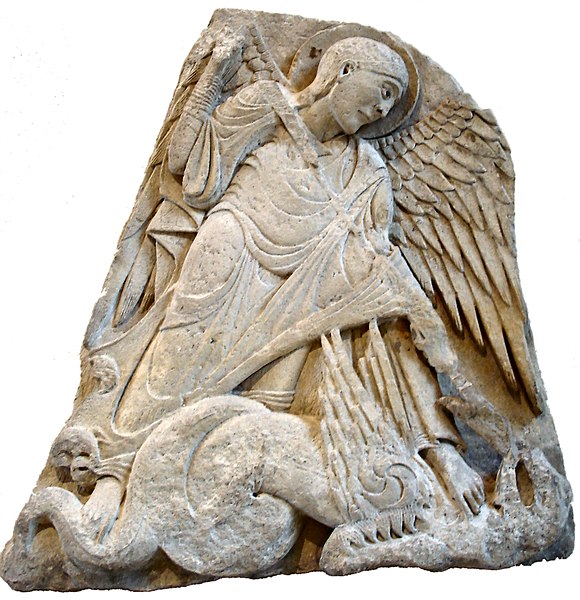Thursday
Daniel 7:9-10, 13-14
As I watched,
thrones were set in place,
and an Ancient One took his throne,
his clothing was white as snow,
and the hair of his head like pure wool;
his throne was fiery flames,
and its wheels were burning fire.
10A stream of fire issued
and flowed out from his presence.
A thousand thousands served him,
and ten thousand times ten thousand stood attending him.
The court sat in judgment,
and the books were opened.
The artists of the medieval church gave us graphic and frightening images of the last judgment. Christ and his apostles sit over a scene where demons drag the condemned down into the fiery pits below, while angels escort the righteous up into the heavenly city. It is an image repeated often. On the town clock in Prague a skeleton turned an hourglass at the tolling of the hour to remind us all we were one hour closer to death and judgment. The ministrations of the church were required to save you from the pits of hell and, even then, we were not ready for bliss without the millions of years required to purge us of our sinfulness.
It is a vivid image, now mostly forgotten. We live in a society where there is either no afterlife, or the afterlife is a blissful reunion with loved ones open to all. The notion we are all destined for peace is not shaken by texts such as this from Daniel – for the scripture has lost its authority. We know better. Or, at least, we prefer our own sentiments to those of the ancient world recorded in the holy books.
We think we are so much wiser than the ancients, though we still do not know how to build a pyramid. Humility is called for. And some care and caution – for most of humanity has believed for most of human history that there is accountability in the life to come for the way we have lived this life.
But careful reading of the scripture is also called for – for here, in this vivid imagery from Daniel, it is not the individual life that is called to account; it is the beastly kingdoms of the world.
The author of Daniel had very specific kingdoms in mind, writing as he did while Antiochus Epiphanes IV was seeking to “modernize” Israel’s ancient faith. In typical imperial form, he imposed his will on the people, slaying those who refused to eat pork or secretly circumcised their children. When rebellion broke out, he cleverly attacked on the Sabbath, slaughtering the mass of Judeans who refused to break the law by lifting the sword on the Sabbath.
The human imperial impulse manifests itself again and again in death. There are no end to wars, no end to the slaughter of innocents, no end to the stirring of hate and shutting of hearts and doors to those in need. And empire follows empire. The author of Daniel looks back upon Babylon, Medea, Persia and Alexander and his generals. Since then we have had Rome and Caliphates and the Imperial powers of Europe who have left such a devastating inheritance to Africa and the Middle East. We have had Hitler and Stalin and Pol Pot and the American corporate empire. And, in the small spaces in between the great empires, many small terrors of every political stripe. The Arminian Genocide. Rwanda. Idi Amin. South Africa. The Congo. Isis.
Daniel’s vision is not a threat that our lives will be judged; it is a promise that kingdoms will be judged. Every tyranny shall be thrown down, every beastly empire. And, in the end, shall come an empire like “a son of man,” like a human being. An empire from God (thus the clouds) not out of the remnants of the primordial chaos (the sea). A reign of justice, faithfulness and peace. A reign of grace and life.
Daniel saw this promise embodied in a vision. We have seen this promise enfleshed in Jesus. For he brought a reign of healing and life. And he has given us his Spirit. And the day shall come when the beasts are judged and the crucified and merciful one alone shall govern. Every land. Every heart. A world made new.

